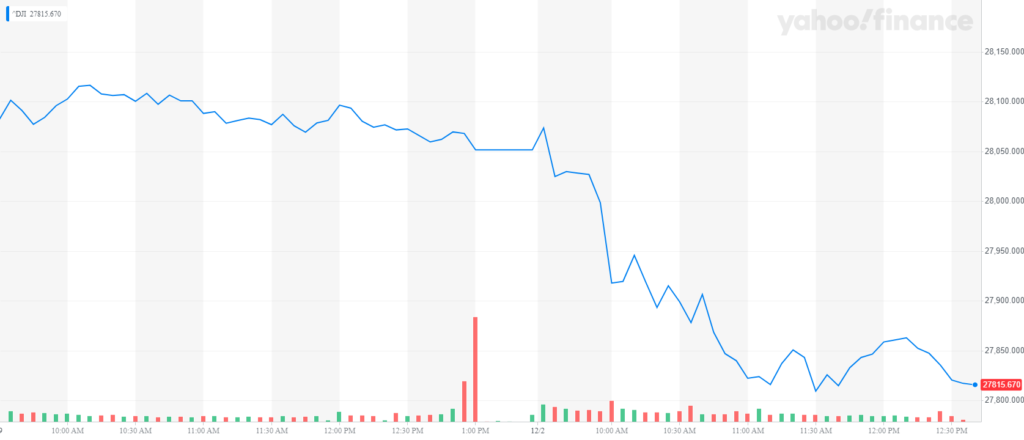November marked the fourth-straight month of contraction for U.S. manufacturing, and traders on Wall Street ran for the hills on the news.
The monthly Institute for Supply Management manufacturing reading that came out Monday showed the index was at 48.1, 0.2 points lower than October’s date, which wasn’t even close to its projected 49.4.
What’s the big deal with the number? It actually corresponds to the percentage of manufacturers that are eyeing expansion. Anything above 50 is considered an expansion, while anything below that mark signals contraction — or recession.
The numbers were driven down by new orders that sank to 47.2, a 1.9 percentage point drop from October. Inventories dropped 3.4 percentage points to 45.5, as well.
The news rocked Wall Street. The Dow Jones Industrial Average was down 250 points, or 0.9%, to 27,803 points around 11:35 a.m. on the East Coast. The S&P 500 was also down 27 points, or 0.8%, while the Nasdaq took a 1.2% hit, dropping 107 points, around the same time.
The Dow had recovered slightly to 27,815 points around lunchtime Monday.

Analysts see this data putting a bit of a dent in market expectations going into 2020.
“All in all, this should take some wind out of the sails of the argument that the U.S. economy is accelerating going into the end of the year,” BMO Capital Markets’ Jon Hill said, according to CNBC.
Markets have been surging back after a rough summer that saw the yield curve invert, a reliable recession indicator. But the ongoing contraction in manufacturing could trickle into other sectors of the U.S. economy. That could take some time, though, as manufacturing only makes up about one fifth of U.S. gross domestic product.
Pantheon Macroeconomics Chief Economist Ian Shepherdson said in a note to clients that the report shows manufacturing “is stuck in a mild recession with little prospect of a real near-term revival.”
August marked the first month in over a decade that the manufacturing sector contracted.
Shepherdson thinks that it “will weigh on job growth and capex over the next few months, to the point where we are not ready to rule out a further [Federal Reserve] easing in January.”
That would please President Donald Trump who has lambasted the Fed for not easing enough. The central bank has already cut its benchmark interest rate policy three times this year to a range of 1.5% to 1.75%.




